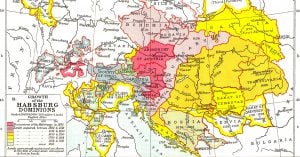Legacy Tree Honored as One of Utah’s 100 Fastest Growing Companies for the Third Year in a Row
Legacy Tree Genealogists has been named to MountainWest Capital Network’s (MWCN) 2019 Utah100, the annual list of the state’s fastest-growing companies. This is the third year in a row the company has made the list, this year being ranked at #56.
MWCN’s exclusive awards program brings together investors, entrepreneurs and professional service providers while recognizing Utah’s 100 fastest-growing companies and the economic and business impact they bring to the state.

Founded in 2004, Legacy Tree Genealogists provides full-service genealogical research for clients worldwide, helping them break through genealogy “brick walls” to create and preserve their family legacy. The Legacy Tree team also provides essential DNA analysis, helps clients identify unknown parents or grandparents, helps clients prepare to visit their ancestral homelands, gathers documents for dual-citizenship applications and much more.
“We are excited to receive this recognition once again,” said Jessica Taylor, founder and president of Legacy Tree Genealogists. “Our continued growth wouldn’t be possible without the efforts of each member of our team and their commitment to provide consistently high-quality research for our clients.”
Utah 100 honorees were chosen based on both their percentage and dollar revenue increase between 2014 and 2018. MWCN’s award event, now marking a quarter century of recognizing the top companies in the state, honored award recipients at the Grand America Hotel in Salt Lake City.
“Utah’s economy has never been stronger, and it’s in large part thanks to the tremendous efforts of these companies and others that make Utah truly the place to be for business,” said Ryan Dent, chairman of the MWCN Utah 100 committee. “We’ve had 25 great years of honoring the companies making Utah great, and we look forward to the next 25 years and beyond.”
Legacy Tree Genealogists combines both traditional genealogy research with advancements in genetic genealogy to resolve even the most difficult research questions. Contact us today to request your free quote.




 The current headquarters of the Iaşi archives are on B-dul Carol I no. 26, on one of the most prestigious and select streets, close to “Alexandru Ioan Cuza” University. The hours for the lecture hall – where researchers are granted a free permit – are listed on the website of the
The current headquarters of the Iaşi archives are on B-dul Carol I no. 26, on one of the most prestigious and select streets, close to “Alexandru Ioan Cuza” University. The hours for the lecture hall – where researchers are granted a free permit – are listed on the website of the

 The search for new land is one of the main themes of American history, so it makes sense that land records would be an important part of researching that history. The right to own real estate was not universal in most of the countries from which the majority of
The search for new land is one of the main themes of American history, so it makes sense that land records would be an important part of researching that history. The right to own real estate was not universal in most of the countries from which the majority of 



 It’s not unusual for communities’ names to change for a variety of reasons. In Lebanon County,
It’s not unusual for communities’ names to change for a variety of reasons. In Lebanon County, 








 After the annexation of lands to form the new crownland of Galicia, the Austrian government implemented a requirement in 1784 making clergy responsible for recording birth, marriages, and deaths. A part of the new law included standardized columnar format registers.
After the annexation of lands to form the new crownland of Galicia, the Austrian government implemented a requirement in 1784 making clergy responsible for recording birth, marriages, and deaths. A part of the new law included standardized columnar format registers.






 Family can mean different things to different people. For some, it means to be with people who understand and accept you unconditionally. For others, it is strictly those to whom they have a biological connection. Some of us don’t have ideal families, while others couldn’t imagine their life without family. Most often, though, it’s a mixture of each of these types of relationships.
Family can mean different things to different people. For some, it means to be with people who understand and accept you unconditionally. For others, it is strictly those to whom they have a biological connection. Some of us don’t have ideal families, while others couldn’t imagine their life without family. Most often, though, it’s a mixture of each of these types of relationships.
 Society columns
Society columns